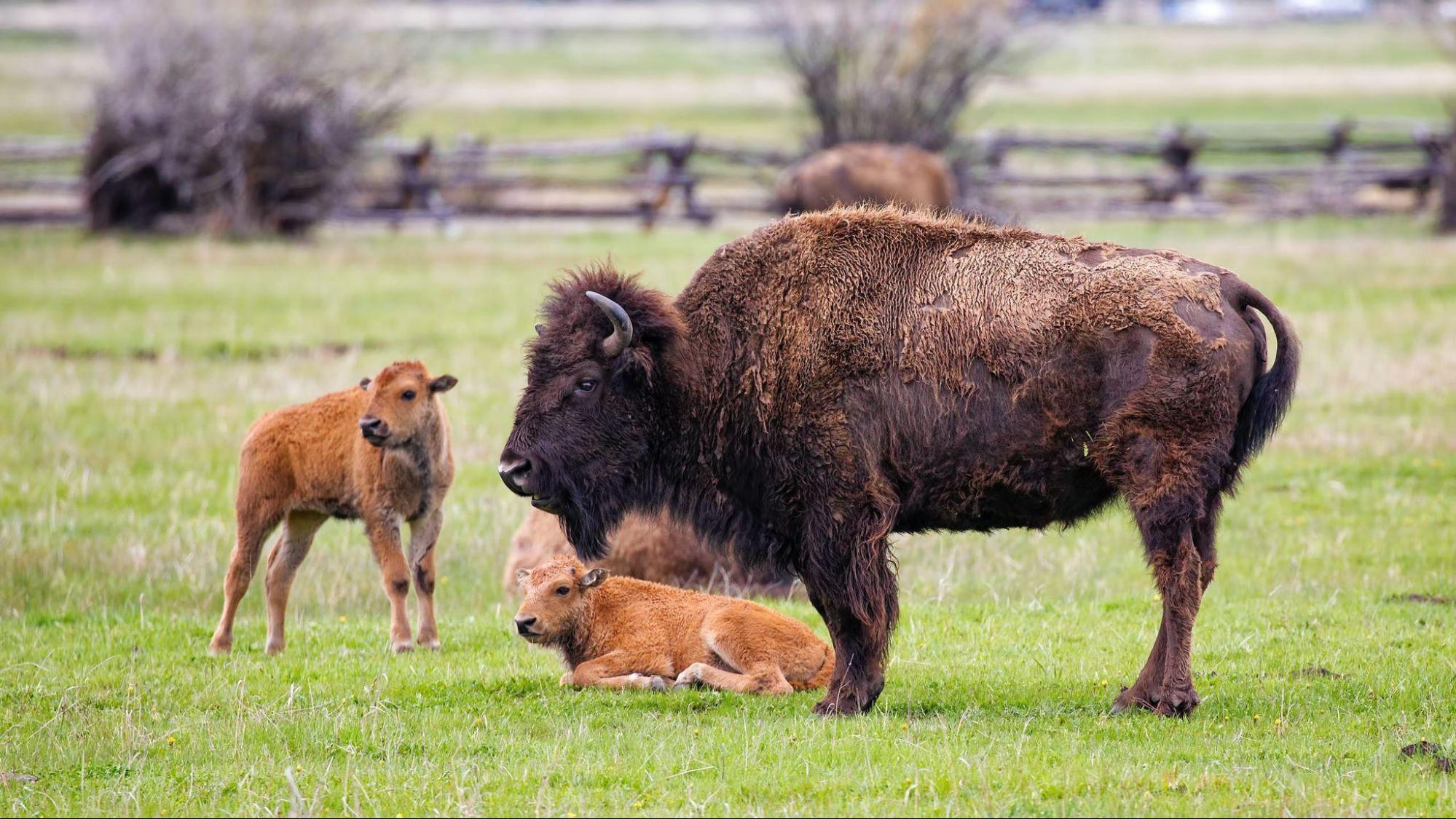Are you trying to amp up your fitness and nutrition routine? Many athletes and health enthusiasts are choosing bison as their go-to protein source for optimal performance, but what sets it apart from beef? In this article, we’ll break down the key differences between bison and beef so you can make an informed decision that assists in meeting your fitness goals. Let's dive into the benefits of eating bison—you may be surprised at the clear winner!
Related Link: Protein Mug Cake Recipe
Introducing Bison and Beef
Bison and beef are often compared due to their similarities and differences. Both animals are ungulates with even toes and belong to the same genetic family, Bovidae. However, cattle are domesticated creatures, while bison are nomadic grazers. They are both ruminants, meaning they can derive nutrition from vegetation through their specialized stomach systems that ferment vegetation before digestion.
Cattle are known to consume grassy vegetation, but they are frequently fed grain-based feeds. Bison, on the other hand, travel in herds and eat their natural diet. Bison migration is thought to be motivated by a desire to improve their diet. American bison are commonly referred to as buffalo in North America, despite the fact that they are not related to true buffalo, which are found in Asia and have distinct physical characteristics.
In prehistoric times, millions of bison roamed the North American continent from Mexico to Alaska and east through the Appalachian Mountains. However, by the late 1800s, human hunting and habitat destruction had reduced their population to a few hundred. Today, bison populations have thankfully recovered, with approximately 500,000 bison in the United States, over 12,000 in Canada, and a small herd of 80 to 130 animals in Mexico.
Related Link: Best Supplements for Stress
Breaking Down the Nutrition Facts

There are several key differences to consider when comparing the nutritional content of bison vs beef. Bison contains fewer calories and fat than beef, as well as more protein, iron, and vitamin B12. A 3-ounce serving of cooked bison contains approximately 152 calories, 7.3 grams of fat, 3 grams of saturated fat, and 22 grams of protein, whereas a 3-ounce serving of beef contains approximately 220 calories, 14 grams of fat, 5.8 grams of saturated fat, and 22 grams of protein. Bison also has less cholesterol than beef.
Furthermore, bison has a higher omega-3 to omega-6 fatty acid ratio than beef, which may help reduce inflammation and reduce the risk of heart disease. Bison is also high in zinc, selenium, and phosphorus, all of which are beneficial to immune function, bone health, and energy metabolism.
Do you want to use performance gummies to fuel your fitness journey? Checkout HUMBLEROOTS right now!

Cooking Methods
When it comes to taste, a bison steak is similar to lean beef, and it cannot be easy to distinguish between the two. Bison herds are often free-roaming, which results in finer marbling and more even fat distribution than traditional beef, resulting in a richer, beefier flavor. However, overall flavor and tenderness remain the same, provided you cook your bison steaks correctly.
When it comes to cooking bison steak, the techniques differ significantly from standard beef steak recipes and beef grilling methods. Due to the lean nature of bison meat, cooking times need to be reduced by 20-30%. Grilled bison steaks should never be cooked beyond medium rare, and searing the bison steak is essential to keeping the moisture inside. Additionally, bison should be finished at a slightly lower temperature than beef steak, as it is leaner meat and requires shorter cooking times.
Looking for performance-optimizing gummies for your fitness journey? See our gummies at HUMBLEROOTS today!
Bison Burger Recipe
Bison burgers are a tasty alternative to traditional beef burgers, offering a leaner meat option that is just as delicious. This recipe uses an 85% lean and 15% fat ground bison meat blend for optimal flavor and juiciness. To give these burgers their unique and delicious taste, a blend of spices is used, including smoked paprika, onion powder, dried parsley, garlic powder, and cayenne pepper. These spices combine to create a flavorful and satisfying burger for the whole family. When cooking these burgers, it's important to remember that they cook faster than beef burgers due to their lower fat content. Aim for medium-rare or medium for optimal results, cooking the burgers for about 6-7 minutes total. However, be sure to cook them to your desired level of doneness, and remember that the USDA recommends cooking ground meats to be 160°F.
Ingredients:
- 1 pound 85% lean, 15% fat ground bison
- One tablespoon Dijon mustard
- One teaspoon onion powder
- One teaspoon garlic powder
- One teaspoon smoked paprika
- One teaspoon dried parsley
- 1/4 teaspoon cayenne pepper
- One teaspoon kosher salt
- 1/4 teaspoon black pepper
- Avocado oil for the grill
Instructions:
- Mix the ground bison, Dijon mustard, onion powder, garlic powder, smoked paprika, dried parsley, cayenne pepper, kosher salt, and black pepper in a large bowl until well combined.
- Divide the mixture into four equal parts and form them into patties. Make a dimple in the center of each patty to help them retain their shape while cooking.
- Preheat your grill to medium-high and oil it with avocado oil.
- Place the burgers on the grill and cook for 3-4 minutes per side or until they reach your desired level of doneness.
- Serve the burgers on buns with lettuce and tomato, and enjoy!
Comparing Beef and Bison
All things considered, when you compare the two meats side by side in terms of nutrition and taste profiles–it’s easy to see why so many healthy people and fitness enthusiasts these days prefer eating grass-fed buffalo over traditional grain-fed cuts of beef! Not only will switching help reduce your calorie intake each day while still providing plenty of protein for muscle growth–but because grass-fed buffalo also contains more essential vitamins/minerals like iron & zinc–you can rest assured knowing that every bite not only tastes great but provides optimally balanced nutrition too! So next time you’re deciding between ordering a steak or some buffalo steak at a restaurant–go with the latter! Your body will thank you later!
Related Link: How to Get Rid of Muffin Top: 4 Best Ways



